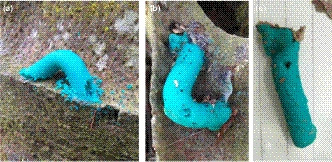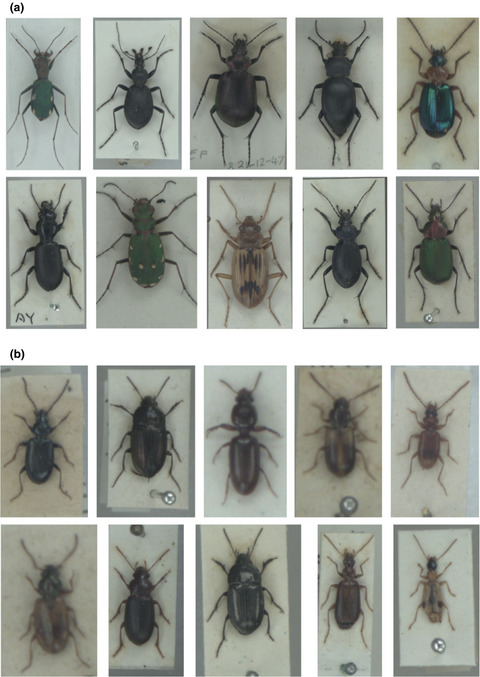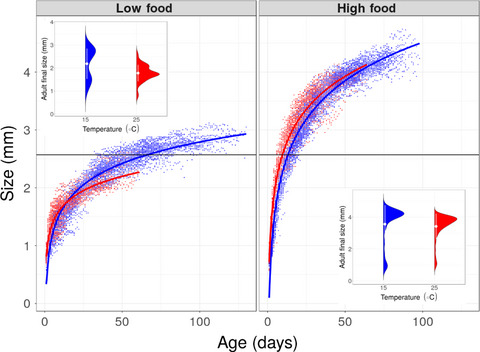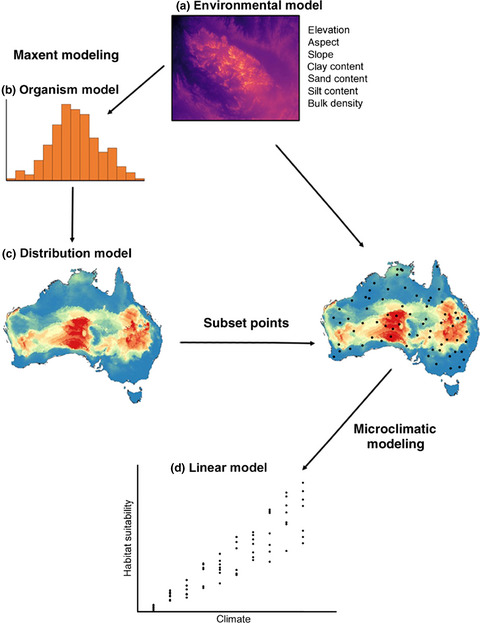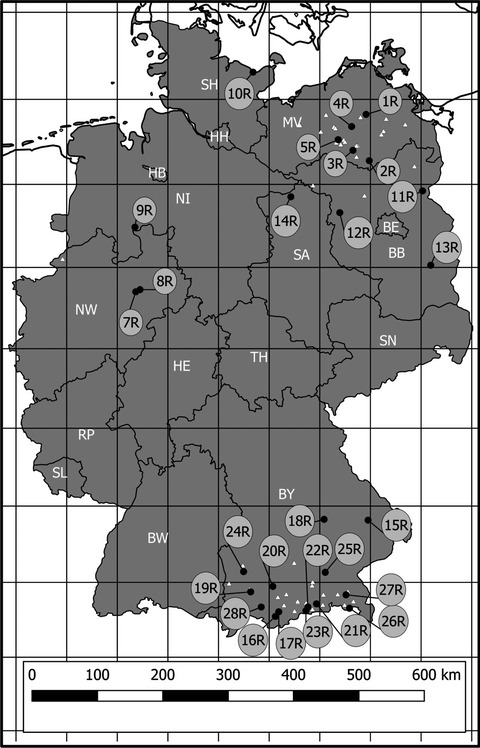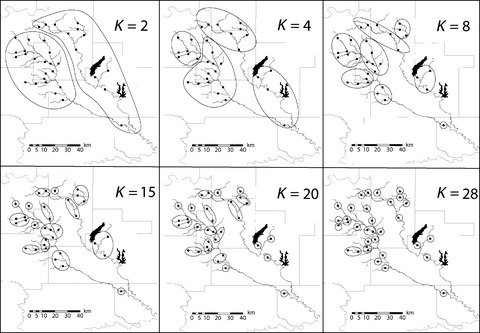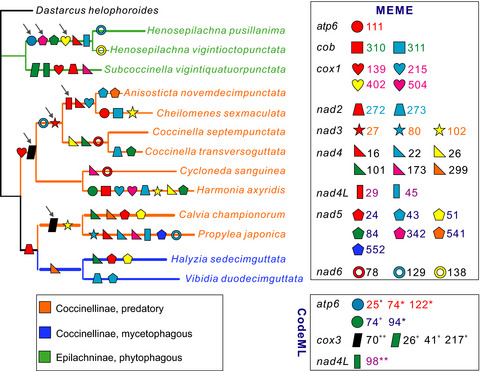Journal list menu
Export Citations
Download PDFs
ISSUE INFORMATION
ACADEMIC PRACTICE IN ECOLOGY AND EVOLUTION
Communicating the consensus on climate change to college biology majors: The importance of preaching to the choir
- Pages: 594-601
- First Published: 09 January 2020
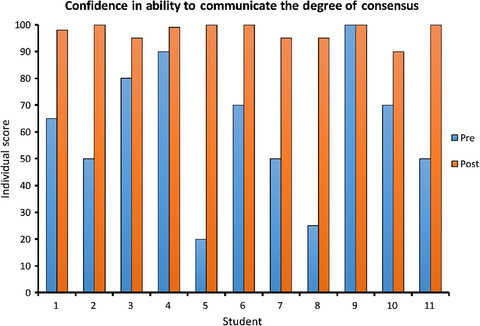
Upper-division biology majors at a research university who were not climate change deniers were found to greatly underestimate the scientific consensus on climate change, to be only moderately worried about climate change, and to have little confidence in communicating to others about the level of scientific agreement climate change. After exposure to scholarly literature establishing and quantifying the consensus, students were significantly more accurate in their estimates of scientific consensus on climate change, more worried about climate change, and more confident in their ability to communicate about the consensus to others.
ORIGINAL RESEARCH
Temporal changes in abundance–occupancy relationships over 40 years
- Pages: 602-611
- First Published: 30 September 2019

Under current circumstances of habitat loss and degradation, macroecological relationships are changing. In this manuscript, we documented changing abundance–occupancy trends for different groups of bird species, over a 40-year time period. We further showed that a temporally unvarying abundance–occupancy relationship is not universal, and we posit that variability in A–O relationships is due to human impacts on habitats, coupled with variation in species' abilities to respond to human impacts.
Experimental migration upward in elevation is associated with strong selection on life history traits
- Pages: 612-625
- First Published: 02 October 2019
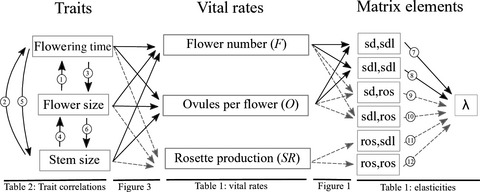
We use a high-elevation common garden experiment to test the potential for up-slope migration and corresponding patterns of phenotypic selection in yellow monkeyflowers. We find that lower-elevation populations have higher fitness than local populations, but experience strong selection on life history traits in a high-elevation environment. Lineages moving upward in elevation with continued climate change could experience selection for novel trait combinations.
Food quality effects on instar-specific life histories of a holometabolous insect
- Pages: 626-637
- First Published: 03 January 2020
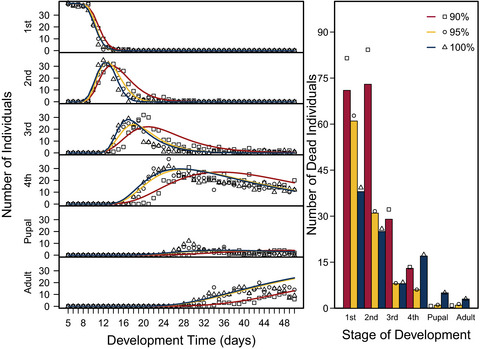
A long-standing challenge is to understand how changes in host food quality impacts host quality, and how they scale up to influence parasitism rates and parasitoid fitness. Here, we evaluate whether the effects of food quality on host life history are equal throughout ontogeny to ascertain whether trait variation across instars should be considered when characterizing food quality effects. By combining a cross-sectional experimental approach with a stage-structured population model to estimate instar-specific vital rates, we find strong evidence for a trade-off between host size and development time within an instar suggesting that juvenile instar-structure is important for host susceptibility to parasitism and parasitoid fitness.
Modular chromosome rearrangements reveal parallel and nonparallel adaptation in a marine fish
- Pages: 638-653
- First Published: 11 January 2020
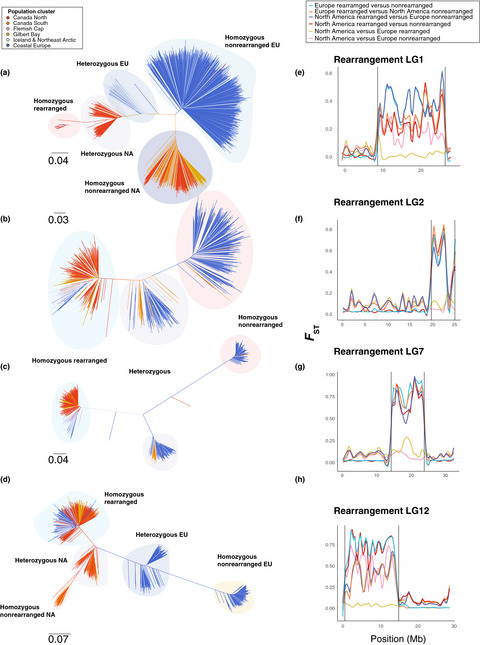
Understanding parallel evolution in wild populations has long been central to evolutionary biology; genomic evidence has recently indicated an important role for chromosomal structural variation in parallel adaptation. Atlantic cod show repeated evidence of local adaptation across diverse marine habitats, with recent evidence implicating the involvement of a series of chromosomal rearrangements. We explore the distribution and trait and environmental associations of these chromosomal rearrangements within populations range-wide. We find that across the North Atlantic contemporary adaptation and individual-based biocomplexity in Atlantic cod is frequently underlain by shared chromosomal rearrangements.
Predation of potential insect pests in oil palm plantations, rubber tree plantations, and fruit orchards
- Pages: 654-661
- First Published: 31 December 2019
Habitat of the endangered salt marsh harvest mouse (Reithrodontomys raviventris) in San Francisco Bay
- Pages: 662-677
- First Published: 07 January 2020
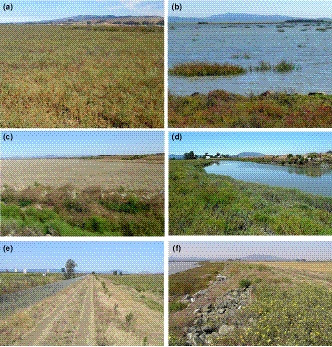
We modeled environmental and habitat associations of federally endangered salt marsh harvest mouse (SMHM) and co-occurrence with eight associated small mammal species from annual trap data, 1998–2014, in six estuarine marshes in North San Francisco Bay, California. Within the pickleweed marsh environment, SMHM are mostly habitat generalists, with substantial habitat overlap with California voles and other species. SMHM selected for higher marsh elevation, greater plant cover, and large marsh patches.
Grazing effects on intraspecific trait variability vary with changing precipitation patterns in Mongolian rangelands
- Pages: 678-691
- First Published: 26 December 2019
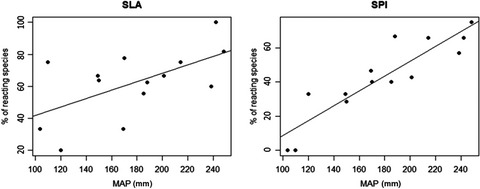
We focused on the intraspecific changes of plant traits along a precipitation gradient with changing grazing pressure. In detail, we analyzed the intraspecific trait variability of seven traits (canopy height, plant width, specific leaf area, chlorophyll fluorescence, performance index, stomatal pore area index, and individual aboveground biomass) of 15 common steppe species along a precipitation gradient with different grazing intensities at each precipitation level in Mongolian rangelands. Our results highlight that both species and traits show specific or even opposite variability responses to the precipitation gradient under increasing grazing intensity.
Seasonal shifts in the assembly dynamics of benthic macroinvertebrate and diatom communities in a subtropical river
- Pages: 692-704
- First Published: 03 January 2020
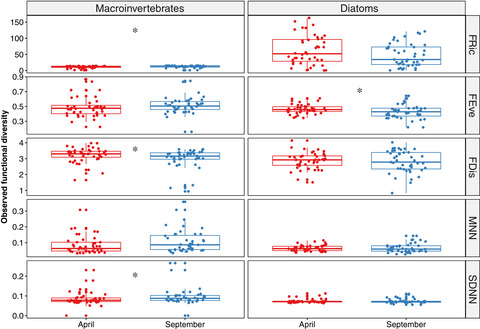
(a) Null models suggested that environmental filtering, competitive exclusion, and neutral process were all important community assembly mechanisms for both biological groups. (b) Different biological assemblages in a river system presented similarities and differences in assembly mechanisms. (c) Patterns and underlying mechanisms are seasonally variable.
Spatial sampling bias and model complexity in stream-based species distribution models: A case study of Paddlefish (Polyodon spathula) in the Arkansas River basin, USA
- Pages: 705-717
- First Published: 25 December 2019
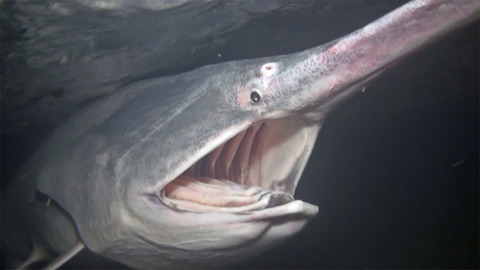
This study examines the effects of spatial sampling bias and model complexity on distribution estimates of the Paddlefish (Polyodon spathula) within a stream network. Available tools to address Maxent model complexity and performance currently rely on raster-based input data; however, we provide customized R code (supplementary material, see Dryad) that allows exploration of these topics within stream segment-based models. We hope this case study spurs development of tools that advance Maxent modeling practices within stream networks and other nonraster environments. Photograph by Brandon Brown, ODWC.
Differentiation during fig ontogeny suggests opposing selection by mutualists
- Pages: 718-736
- First Published: 07 January 2020
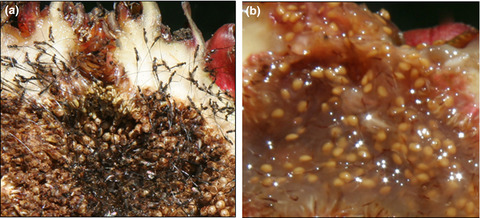
Dioecious figs offer an excellent opportunity to test the importance of mutualists to select for flower and fruit-stage traits. At the flower stage, both male and females need to attract pollinators, but at the fruit stage only females need to attract seed disperser, as males do not bear viable seeds. We found that figs of both sexes indeed share traits at the flower stage but differentiate at the fruit stage, which is concordant with the hypothesis that mutualists select for flower and fruit appearance in the genus.
Species-level image classification with convolutional neural network enables insect identification from habitus images
- Pages: 737-747
- First Published: 24 December 2019
Perceived wintering latitude determines timing of song output in a migratory bird
- Pages: 748-755
- First Published: 28 December 2019

Migratory bird populations often consist of individuals that overwinter at different distances from a common breeding site. In the laboratory, we compared singing behavior between two groups of birds (one “migratory” and one “resident”) that we subjected to natural photoperiods of Tampa, Florida, and Bloomington, Indiana, respectively. We found that the residents sang more during the prebreeding stage, but after a simulated spring migration, song output in the two groups was the same.
Food availability modulates temperature-dependent effects on growth, reproduction, and survival in Daphnia magna
- Pages: 756-762
- First Published: 27 December 2019
High-resolution distribution modeling of a threatened short-range endemic plant informed by edaphic factors
- Pages: 763-777
- First Published: 15 December 2019
Spatial variability in the amount of forest litter at the local scale in northeastern China: Kriging and cokriging approaches to interpolation
- Pages: 778-790
- First Published: 26 December 2019
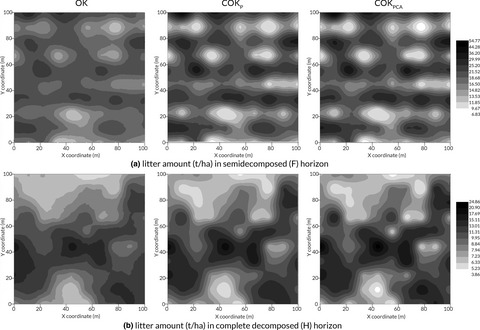
We compared three spatial interpolation methods (ordinary kriging, ordinary cokriging with Pearson correlation analysis, and ordinary cokriging with principal component analysis) for better estimating the spatial pattern of litter amount in forest ecosystems. Our results provided evidence that cokriging based on principal component analysis can be successfully applied to improve the prediction of litter amount.
A framework for conceptualizing dimensions of social organization in mammals
- Pages: 791-807
- First Published: 16 December 2019
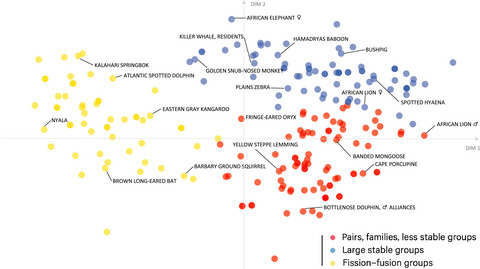
Social organization is an aspect of animal social systems that has not been conceptualized yet and is often reduced to group size. This framework describes eight central dimensions of social organization to capture its diversity across mammalian societies. By applying our framework across 208 species of all mammalian taxa, we find a rich multidimensional landscape of social organization.
Stable isotope records of sei whale baleens from Chilean Patagonia as archives for feeding and migration behavior
- Pages: 808-818
- First Published: 18 December 2019
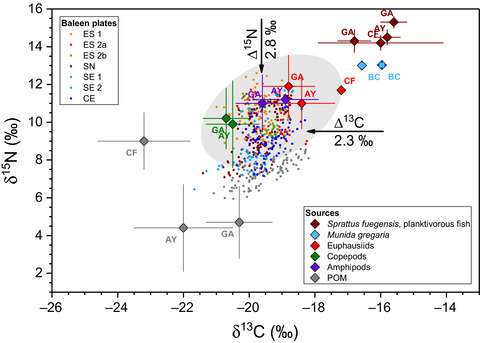
We analyzed carbon and nitrogen stable isotopes of southern sei whale baleens from a mass mortality event in Chilean Patagonia to assess dietary and migratory patterns. Oscillating isotope patterns of baleens were statistically analyzed and related to seasonal latitudinal migrations. Different feeding habits and migration routes are evident in the baleen isotopic records.
Hollow oaks and beetle functional diversity: Significance of surroundings extends beyond taxonomy
- Pages: 819-831
- First Published: 08 January 2020

Veteran hollow oaks (Quercus spp.) are keystone structures hosting high insect diversity. The aim of this study was to establish whether the features and surroundings of these trees are related to functional diversity of beetles within three functional groups (decomposers, predators, and flower visitors) and determine whether species richness and functional diversity within the groups are dependent on the same predictors. Previous studies have found that veteran oak's features and surroundings are important for conservation of taxonomic diversity, but the results from this study clearly indicate that they are also important for supporting multiple ecosystem functions.
Fluctuated water depth with high nutrient concentrations promote the invasiveness of Wedelia trilobata in Wetland
- Pages: 832-842
- First Published: 20 December 2019

In this work, the affect of water depth fluctuation with different nutrient treatments on the growth has been predicted for Wedelia trilobata. Furthermore, our work focused on an important element as competitive interaction index among invasive Wedelia trilobata and its native W. chinensis for prediction of invasiveness of Wedelia trilobata in wetland ecosystem.
Alternative stable states in inherently unstable systems
- Pages: 843-850
- First Published: 20 December 2019
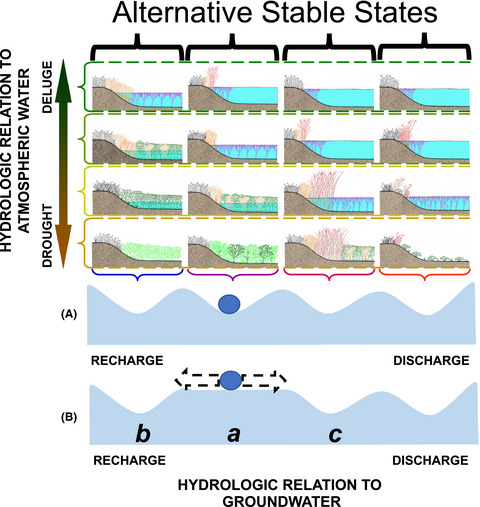
Alternative stable states are a set of nontransitory states within which a community can exist. Ideas presented within stable-state theory can be applied to dynamic systems if the normal range of community variation in response to environmental cycles is considered to be the “stable state.” Prairie-pothole wetland ecosystems provide an example of alternative stable states within a highly dynamic system.
N-P utilization of Acer mono leaves at different life history stages across altitudinal gradients
- Pages: 851-862
- First Published: 18 December 2019
The impact of local population genetic background on the spread of the selfish element Medea-1 in red flour beetles
- Pages: 863-874
- First Published: 19 December 2019
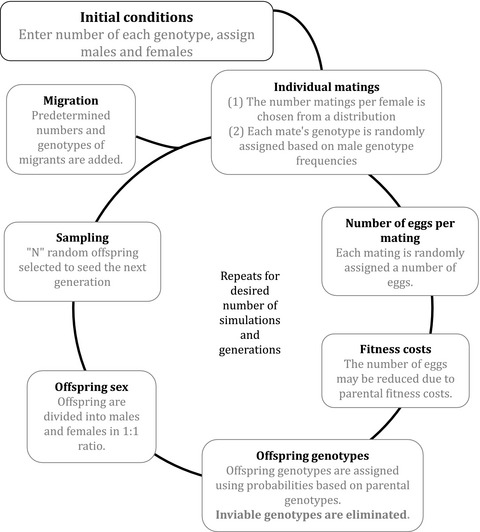
“The impact of local population genetic background on the spread of the selfish element Medea-1 in red flour beetles” is a laboratory study that aims at determining whether field populations that lack Medea or have intermediate frequencies of Medea have some degree of genetic resistance to the selfish mechanism that causes Medea to spread.
Genetic diversity of Helosciadium repens (Jacq.) W.D.J. Koch (Apiaceae) in Germany, a Crop Wild Relative of celery
- Pages: 875-890
- First Published: 17 December 2019
Analysis of evolutionary relationships provides new clues to the origins of weedy rice
- Pages: 891-900
- First Published: 20 December 2019
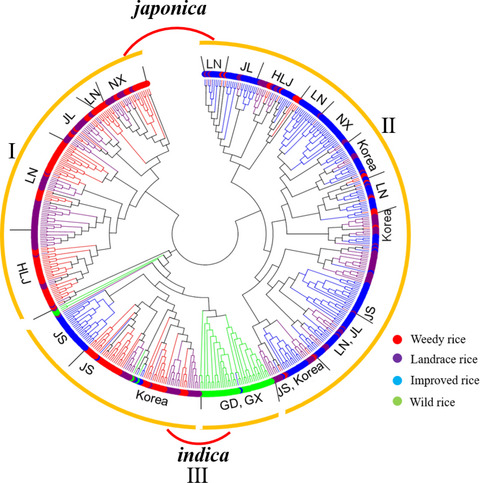
In this study, we conducted a population genetic analysis based on neutral markers and gene haplotypes in 524 rice materials and then conducted a comparative transcriptome analysis in 15 representative samples. Our results suggest that weedy rice (WR) populations in China have diverse origins, and comparative transcriptome analysis of different types of rice from Heilongjiang province, Jilin province, Liaoning province suggests that improved rice populations have become a medium or end point in the evolution of WR, which provides a new perspective for the study of WR origins and lays a solid foundation for rice breeding.
Environmental influences on and antimicrobial activity of the skin microbiota of Proceratophrys boiei (Amphibia, Anura) across forest fragments
- Pages: 901-913
- First Published: 07 January 2020
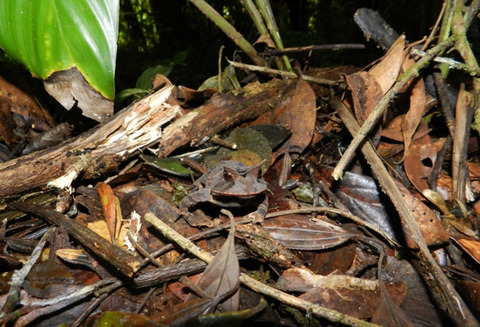
Macro and microenvironmental effects on the skin microbiota of the frog species Proceratophrys boiei. The skin microbiota of the frog P. boiei presents variation between preserved forests and fragments. All individuals of P. boiei harbor bacteria capable of inhibiting the growth of pathogenic bacteria and different strains of the fungus Batrachochytrium dendrobatidi.
Continent-wide population genomic structure and phylogeography of North America’s most destructive conifer defoliator, the spruce budworm (Choristoneura fumiferana)
- Pages: 914-927
- First Published: 07 January 2020
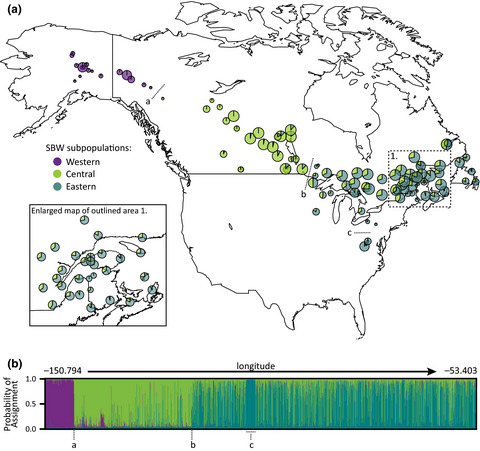
We examined the population genomic structure of the spruce budworm, Choristoneura fumiferana, and found three spatially structured subpopulations: Western (Alaska, Yukon), Central (southeastern Yukon to the Manitoba–Ontario border) and Eastern (Manitoba–Ontario border to the Atlantic). Geographic differentiation in the spruce budworm parallels that of its principal larval host, white spruce (Picea glauca), providing evidence that spruce budworm and spruce trees survived in the Beringian refugium through the Last Glacial Maximum and that at least two isolated spruce budworm populations diverged with spruce/fir south of the ice sheets. Gene flow in the spruce budworm may also be affected by mountains in western North America, habitat isolation in West Virginia, regional adaptations, factors related to dispersal, and proximity of other species in the spruce budworm complex.
Butterfly phenology in Mediterranean mountains using space-for-time substitution
- Pages: 928-939
- First Published: 02 January 2020

Substituting space for time showed novel insights on how butterfly community and individual species respond to a changing environment along an altitudinal gradient in two mountainous areas, in the Mediterranean basin. A general delay in the time of appearance and a progressive shortening in the duration of the flight period with increased altitude was supported, but not the unimodal response of species with different number of generations and trophic preferences. This study is a roadmap for analyzing short-term data in the light of the ongoing climate change, when elevational gradient is available.
Selection and plasticity both account for interannual variation in life-history phenology in an annual prairie legume
- Pages: 940-951
- First Published: 10 January 2020
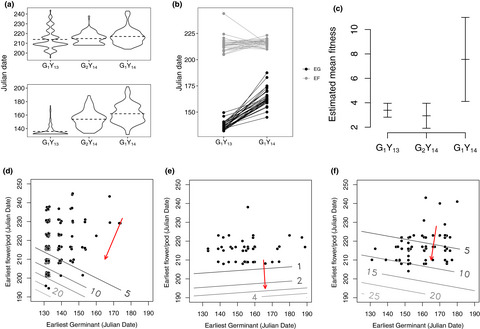
Our study is a phenotypic selection analysis of total lifetime fitness in a natural selective prairie environment. We compare the predicted and observed phenotypic response, taking care to account for the effect of year-to-year variation. We observe a change in mean flowering time that is consistent with the direction of selection when accounting for the effect of the environment, highlighting the importance of controlling for temporal variation in multiyear quantitative genetic studies.
Temporal dynamics of stream fish assemblages and the role of spatial scale in quantifying change
- Pages: 952-961
- First Published: 02 January 2020
Vegetation state changes in the course of shrub encroachment in an African savanna since about 1850 CE and their potential drivers
- Pages: 962-979
- First Published: 30 December 2019

We present the first multidecadal time series with high taxonomic and temporal resolution, which includes sedaDNA, and that enables the tracking of vegetation and environmental change in a southern African savanna. According to our results, shrub encroachment occurs on a scale of one century and with a phase of transition characterized by a steady turnover of taxa, some of which are restricted to this phase. We discuss further the feedback mechanisms that stabilize the encroached state, as well as the triggers of vegetation change.
Do different rates of gene flow underlie variation in phenotypic and phenological clines in a montane grasshopper community?
- Pages: 980-997
- First Published: 30 December 2019
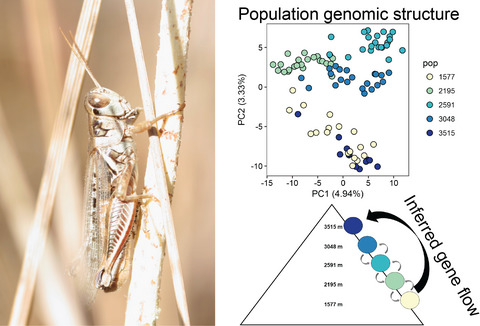
Four grasshoppers species exhibit genetic structure and limited gene flow along elevation gradients in the Rocky Mountains. The strength of genetic divergence is associated with dispersal phenotypes and phenological patterns. The most widespread species, Melanoplus sanguinipes, follows a stepping stone pattern, with the highest elevation population appearing to be a sink population derived from low elevation.
Unrecognized controls on microbial functioning in Blue Carbon ecosystems: The role of mineral enzyme stabilization and allochthonous substrate supply
- Pages: 998-1011
- First Published: 07 January 2020

The present study assessed exo-enyzme activities (EEAs) and microbial abundance along a coastal ecotone stretching a flooding gradient from tidal flat to high marsh. We found that stabilization of exo-enzymes to mineral sediments leads to high specific EEAs at low substrate concentrations in frequently flooded, sediment-rich zones of the studied ecotone. Furthermore, we demonstrate that microbial communities are less nutrient limited in frequently flooded zones, where inputs of nutrient-rich marine organic matter are higher. This was reflected in both increasing exo-enzymatic carbon versus nutrient acquisition and decreasing fungal versus bacterial abundance with increasing flooding frequency.
Gut microbiota in reintroduction of giant panda
- Pages: 1012-1028
- First Published: 06 January 2020
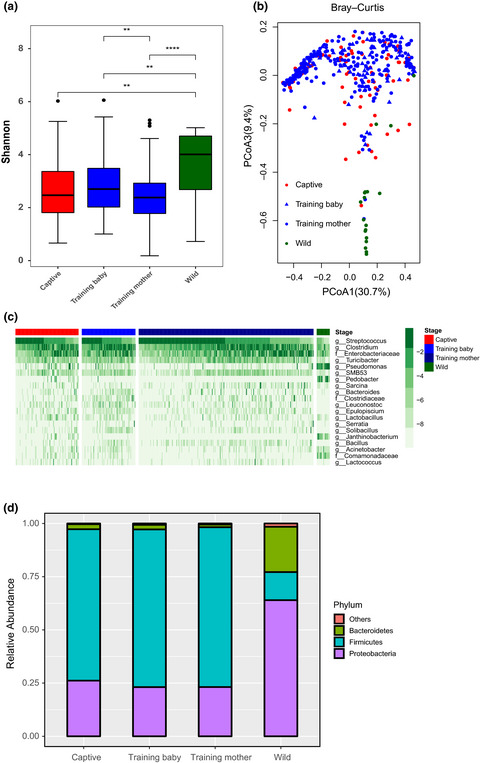
The gut microbiota of wild-training pandas is significantly different from that of wild pandas, but similar to that of captive ones. However, the gut microbiota of panda Zhangxiang gradually changed to that of wild pandas after successful release. Several bacteria that were enriched in the wild-training baby pandas who met the criteria for release into the wild. These bacteria include several known gut-health-related beneficial taxa such as Roseburia, Coprococcus, Sutterella, Dorea, and Ruminococcus, indicating potential roles of these bacteria in the fitness of these baby pandas.
Mesophication in temperate Europe: A dendrochronological reconstruction of tree succession and fires in a mixed deciduous stand in Białowieża Forest
- Pages: 1029-1041
- First Published: 10 January 2020
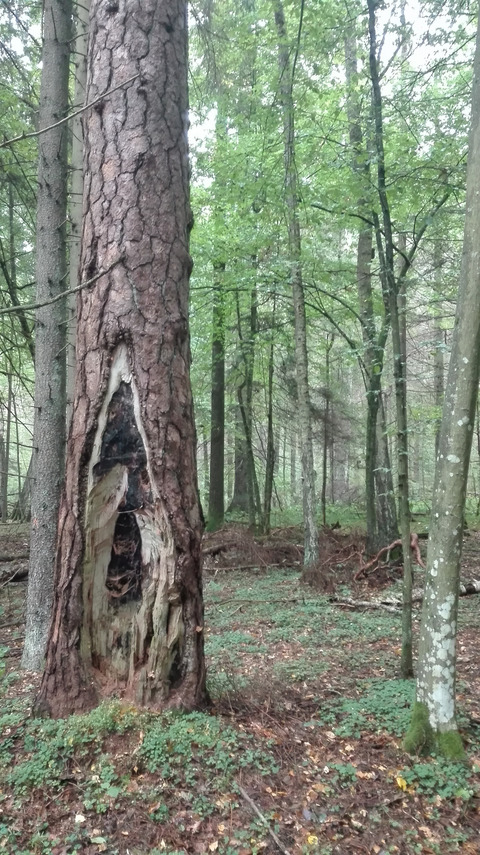
Our study reports the first evidence of mesophication in temperate Europe and proves that fire was involved in shaping the long-term dynamics of a mixed deciduous forest ecosystem in that region. Using tree-ring data, we show that subsequent to fire cessation, gradual encroachment of fire-sensitive, shade-tolerant tree species inhibited the regeneration of light-demanding, fire-adapted species such as oak and pine.
Mitogenome evolution in ladybirds: Potential association with dietary adaptation
- Pages: 1042-1053
- First Published: 02 January 2020
Determining the efficacy of camera traps, live capture traps, and detection dogs for locating cryptic small mammal species
- Pages: 1054-1068
- First Published: 08 January 2020
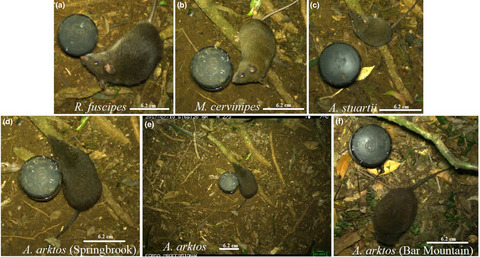
Studies comparing detection methods are imperative to the development and improvement of conservation and management strategies. Camera traps provide higher detection probabilities, when compared to Elliott traps, and are time invariant. Similarly, the detection dog demonstrated high levels of success, locating the target species, Antechinus arktos, in a location that it has not been recorded in 30 years.
Ecological costs of climate change on marine predator–prey population distributions by 2050
- Pages: 1069-1086
- First Published: 09 January 2020

This study tests a range of analytical techniques to quantify ecological costs of climate change on habitat availability of predator–prey or competing mobile species. The study demonstrates how to detect environmentally sensitive habitat areas and is highly useful for habitat management policies under climate change.
HYPOTHESES
Integrating dynamic environmental predictors and species occurrences: Toward true dynamic species distribution models
- Pages: 1087-1092
- First Published: 15 December 2019
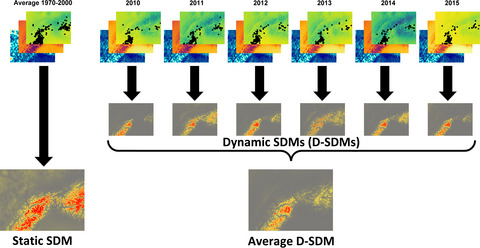
In most studies using species distribution models, predictor variables are averaged over a 50- or 30-year time-period, leading to a strong bias due to monthly/annual variation between the climatic conditions in which species' locations were recorded and those used to develop species distribution models or even a complete mismatch if locations have been recorded more recently. However, thanks to recent development of open access spatially explicit databases providing monthly and annual variation of climate and land-use conditions at global scale, it is now possible to develop dynamic species distribution models, matching dates in which species locations were collected and predictor values.





